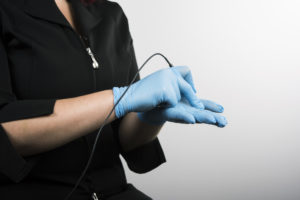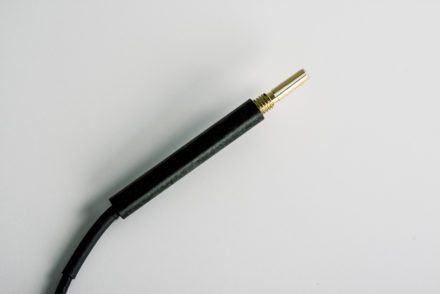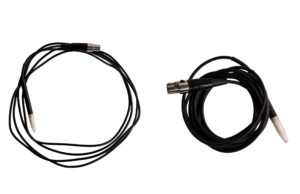Tips to Extend Your Probeholder Lifespan
An electrologists’ most essential tool, the probeholder, can be manipulated hundreds of times every day. A simple movement, when repeated over and over again, can significantly reduce the probeholders lifespan. Here are five tips that will allow you to keep your probeholder working in tip top condition!
During a treatment
Place the probeholder cable around your neck and across the shoulders.

When the cable is placed around your neck, the wires that connect the cable to the probeholder are kept straight and won't put stress on the wires inside the cable.
When the cable dangles from your machine, it hits the ground and comes back up to your hand, this can cause stress on the wires inside the cord. Over time, the wires inside the cord can break and tear.

Avoid twisting the probeholder between your fingers
When you handle your probeholder to perform an insertion, your index finger is positioned on a certain spot. Once the insertion is performed, you have to move your fingers to remove the hair with tweezers. When replacing your fingers on the probeholder to move on to the next hair, make sure you place your index finger on the same spot to avoid rotating and twisting the cable. To view an example, click here.
Trick: to put this tip into practice, draw a mark on the probeholder and make sure your index finger is always placed on it when manipulating your probeholder.
Maintenance
Do not manipulate (bend, squeeze, pry, etc) the prongs!

The prongs are there to hold the probe in place. Since they’re very thin, it is important to never try to bend or squeeze them with your fingers or tweezers. It is very important that you do not pinch or bend them. Also, when you are removing or inserting the white plastic cap, try to avoid touching or putting pressure on the prongs.

If the probe is still loose in the probeholder with the plastic cap screwed completely on, your cap is probably a little too long. Try another cap to see if it secures the probe, and set aside the overlarge cap for later. To fix overlarge caps, file the bottom down on a piece of medium fine sand paper, testing it on the probeholder with a discarded probe, until it screws down enough to securely hold the probe in place.
Storing Your Probeholder
If you want to store your probeholder, roll it in a wide circle to avoid compressing the wires. Just like any other electrical wire, it is sensitive and a very tight circle could cause breakage, permanently damaging the probeholder.

Inserting a New Probe
When inserting a new probe into the probeholder, it is important to not completely remove the white plastic cap. Slightly unscrew the cap, put the probe in the opening then tighten the cap. If you are using a new, sterile cap, be very careful placing the new cap on the probeholder so as to not bend or tweak the prongs.This way, you avoid unnecessary manipulation of the prongs. To view an example, click here.
Following these suggestions will greatly help you improve the longevity of your probeholders, keeping them like new!
credit: blog.dectro.ca

 US Dollars
US Dollars


